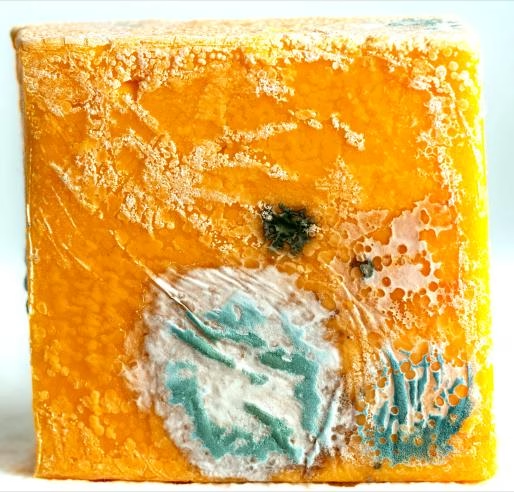Some people think that cutting off the moldy part of food is fine, but is it really safe to eat after removing the mold? How can you tell if food is moldy or spoiled? Which foods are most susceptible to contamination and often overlooked, requiring special attention?
The dangers of moldy food that are often overlooked
During the mold growth process, areas contaminated by mold spores may not be visible to the naked eye. However, areas that can be directly identified by the naked eye are usually already experiencing relatively active growth. Mold becomes visible within 2 to 3 days, and after about 7 days, the mold spores are carried to other locations by air, wind, or moisture.
If you accidentally consume moldy food, it can range from mild gastrointestinal discomfort to severe symptoms such as vomiting, diarrhea, food poisoning, and inflammation. Consuming moldy food for a long time can cause damage and disease to the liver, kidneys, intestines, and cells. When exploring the causes of some liver cancers, the medical community has even directly linked it to “long-term consumption of moldy food.”
How can you tell if food is moldy?
The storage condition of food should be regularly observed, especially if the food changes:
- Unusual black, white, or green patches appear on the surface
- The appearance of mold filaments
- Changes in texture, such as becoming soggy or crumbly, may indicate a problem
- Changes in taste, such as a sour, bitter, or unusual odor (if you notice this, avoid sniffing repeatedly to avoid accidentally inhaling mold spores).
- The above can serve as a guideline. If these signs occur, it may indicate contamination with mold and should be strictly avoided.
Other factors that cause food to mold include:
Common molds on foods include “black mold” found on bread and rice, and “penicillium” found on fruits. Nuts and grains, when improperly stored, often contain “aflatoxin” and its toxins.
The most common factors causing food to mold are improper storage and excessive storage. Mold thrives in high temperatures, high humidity, and cool conditions. When these conditions are favorable and oxygen is available for growth, it can be contaminated by airborne spores.
Improper storage conditions include:
Not completely sealed and exposed to air and mold spores:
Lack of sealing allows for easy contact with potentially lurking mold spores in the air, such as bread, crackers, rice, nuts, and uneaten food that has been stored for a long time.
Exposure to moisture, etc.:
Uneaten food, in addition to being exposed to room temperature, can also be repeatedly touched by damp spoons containing soup, or by food residues or saliva, which can allow bacteria and mold to accumulate and spread. This is especially true for opened canned goods and leftovers.
Extended storage:
The typical refrigerator temperature is approximately 4-7°C. While low temperatures can inhibit the growth of bacteria and mold, they cannot sterilize them. Contaminated food can still gradually mold if stored at low temperatures or if the sterilization process is not effective. Even if fungal spores are already present in the environment, the condition can easily recur if not cleaned and corrected (e.g., in a refrigerator).
Temperature and Environment:
Hot, humid environments are a favorite habitat for various fungi. The FDA also states that 7-60°C is a dangerous temperature zone for bacterial growth. If food stored in this zone frequently molds, do not ignore it.
Impact of Mold Toxins
Be careful when eating moldy food after cutting it off or eating food that has been left at room temperature for too long. Be especially aware of toxins produced by mold metabolites, such as aflatoxins in peanuts, nuts, corn, and grains.
Currently classified as a Class I carcinogen, long-term excessive intake of aflatoxins can cause liver and kidney cell damage, inflammation, or even cancer. Furthermore, these mold-derived toxins cannot be completely eliminated even through high-temperature cooking (above 100°C), so proper storage is essential.
How to prevent food mold: Pay attention to sealing and controlling temperature and moisture.
Food that can be stored at room temperature should be stored in a dry, cool, well-ventilated area. Food that needs to be airtight should be stored in tightly sealed containers. All food should be consumed as soon as possible. The “buy first, eat first” approach, recording purchase times, and remembering expiration dates are all preventative measures.


Leave a Reply